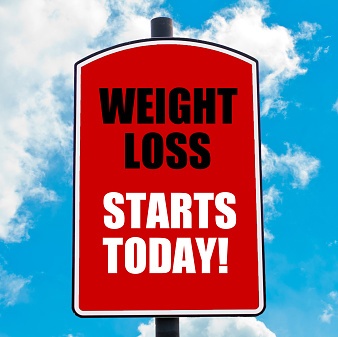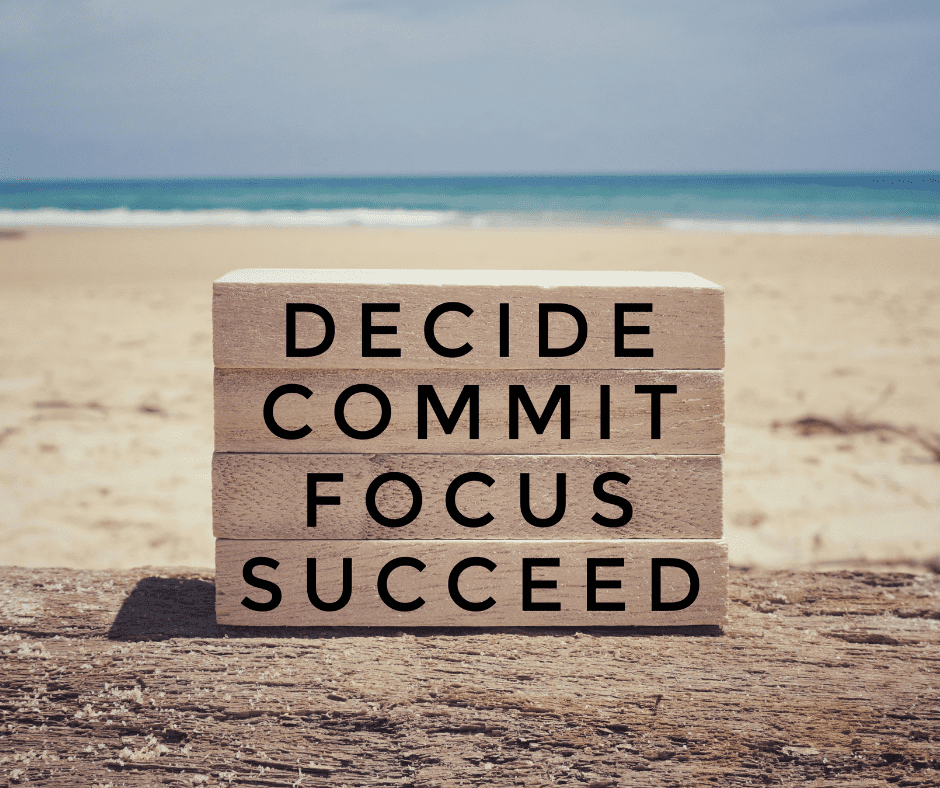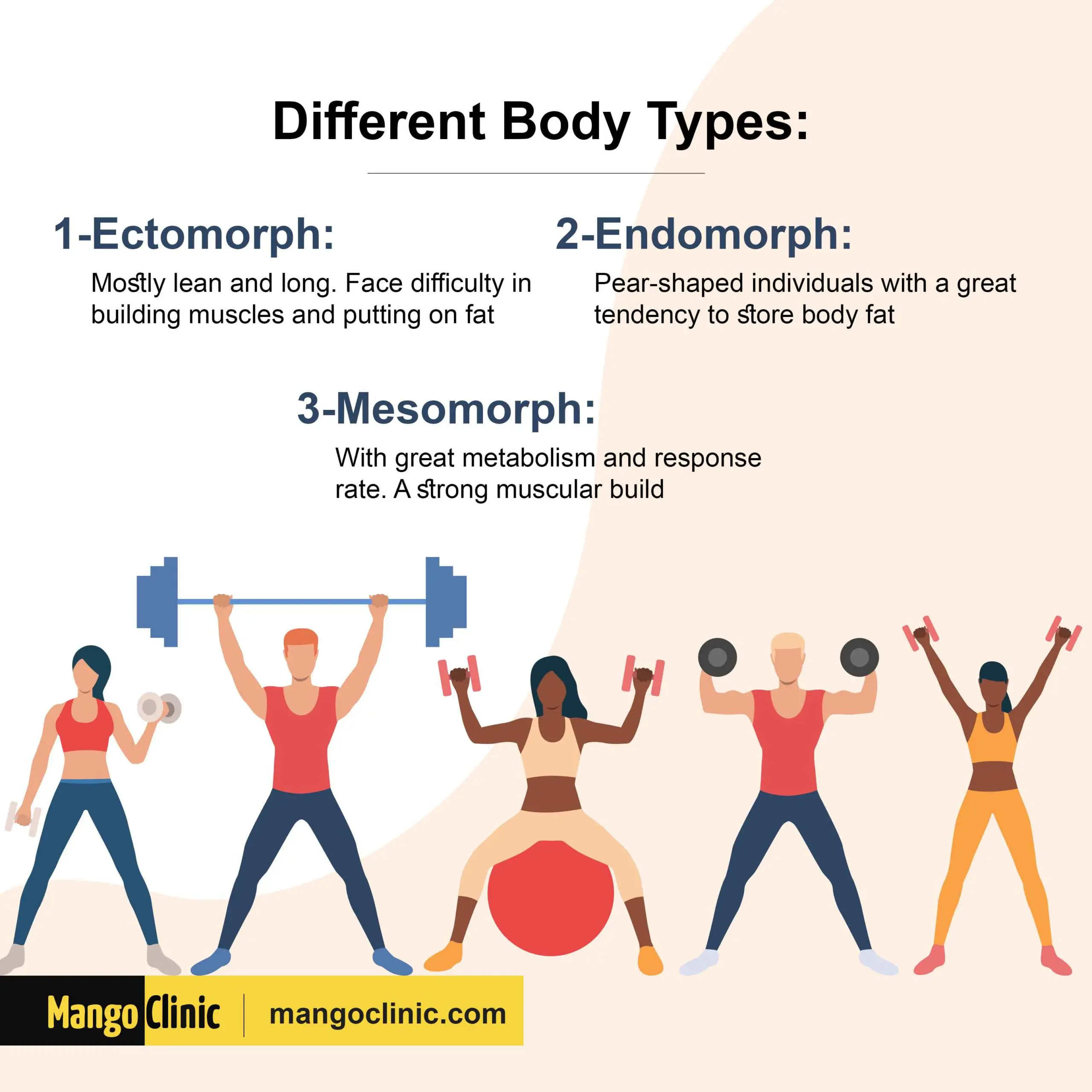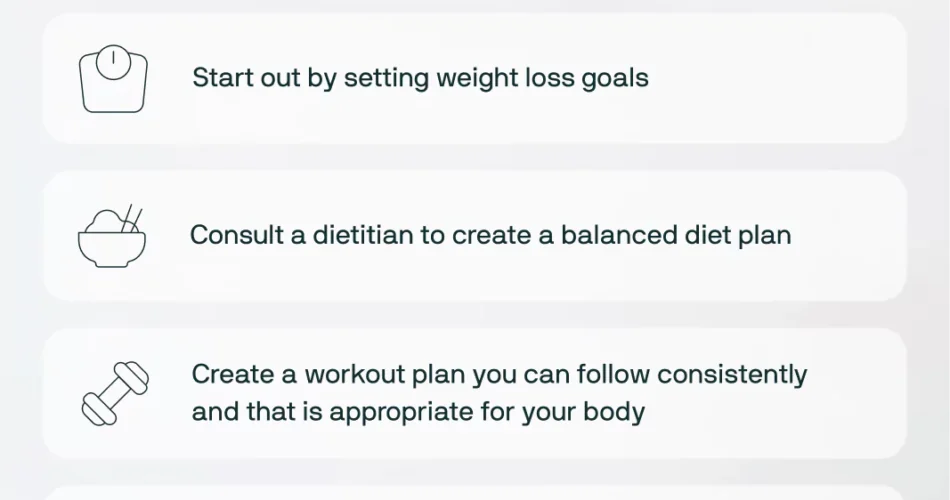To start a weight loss journey, set realistic goals and create a balanced diet plan. Incorporate regular exercise to enhance results.
Embarking on a weight loss journey can be overwhelming. Begin by setting realistic and achievable goals tailored to your needs. A balanced diet plan, rich in nutrients, plays a crucial role in weight management. Combine this with regular exercise, which boosts metabolism and helps shed pounds effectively.
Consistency is key; make gradual changes to your lifestyle for lasting results. Seek support from friends, family, or a professional to stay motivated. Remember, every small step counts towards a healthier you.

Credit: www.nifs.org
Embarking On A Weight Loss Quest
Starting a weight loss journey can feel daunting. But with the right plan, you can achieve your goals. It all begins with understanding your motivations and setting achievable targets.
Identifying Personal Motivations
Personal motivations drive success. Ask yourself why you want to lose weight. Is it for better health, improved appearance, or more energy?
Write down your reasons. Place them somewhere visible. This will remind you of your goals daily.
Consider both short-term and long-term benefits. Short-term motivations might include fitting into a favorite dress. Long-term motivations might be avoiding health issues.
| Short-term Motivations | Long-term Motivations |
|---|---|
| Fitting into clothes | Improved overall health |
| More energy | Reduced risk of diseases |
| Boosted confidence | Longevity |
Setting Realistic Goals
Realistic goals are key to success. Break down your goal into smaller steps.
- Start with a modest weight loss target, like 5-10 pounds.
- Set a timeline, such as losing 1 pound per week.
- Track your progress weekly.
Use the SMART method for goal-setting:
- Specific: Define your goal clearly.
- Measurable: Track your progress.
- Achievable: Ensure your goal is attainable.
- Relevant: Make sure it matters to you.
- Time-bound: Set a deadline.
Celebrate small victories. Each step forward is progress. Stay motivated and keep pushing towards your ultimate goal.
Understanding Your Current Lifestyle
Embarking on a weight loss journey begins with understanding your current lifestyle. This step helps you identify areas for improvement. By assessing your eating habits and physical activity levels, you create a clear path to your goals.
Assessing Eating Habits
Start by tracking your daily food intake. Use a journal or an app to record everything you eat and drink. Note the time of day and portion sizes.
| Food Item | Portion Size | Time of Day |
|---|---|---|
| Oatmeal | 1 cup | 8:00 AM |
| Apple | 1 medium | 10:00 AM |
| Grilled Chicken Salad | 2 cups | 12:30 PM |
Identify patterns in your eating habits. Are you eating late at night? Are you choosing high-calorie snacks? Recognize these patterns to make healthier choices.
Evaluating Physical Activity Levels
Assess your current physical activity levels. Keep track of your daily activities. Note how much time you spend sitting, walking, or exercising.
- Sitting: 8 hours
- Walking: 30 minutes
- Exercising: 20 minutes
Compare your activity levels to recommended guidelines. The average adult should aim for at least 150 minutes of moderate exercise per week.
Create a plan to increase your activity levels. Start with small changes, like taking the stairs or walking during breaks. These small steps add up over time.
Fundamentals Of Nutrition
Starting a weight loss journey can be challenging. Understanding the basics of nutrition is crucial. Nutrition plays a significant role in achieving your weight loss goals. Let’s explore some essential aspects.
Macronutrients And Their Roles
Macronutrients are nutrients that your body needs in large amounts. They include proteins, carbohydrates, and fats. Each macronutrient has a unique role in your body.
Proteins are essential for building and repairing tissues. They also support muscle growth. Good sources of protein are chicken, fish, beans, and tofu.
Carbohydrates provide energy for your body. They fuel your brain and muscles. Choose complex carbs like whole grains, fruits, and vegetables. They offer more nutrients and keep you full longer.
Fats are necessary for hormone production and cell health. Healthy fats include avocados, nuts, and olive oil. Avoid trans fats and limit saturated fats.
| Macronutrient | Primary Function | Sources |
|---|---|---|
| Proteins | Build and repair tissues | Chicken, fish, beans, tofu |
| Carbohydrates | Provide energy | Whole grains, fruits, vegetables |
| Fats | Support cell health | Avocados, nuts, olive oil |
The Importance Of Hydration
Water is vital for your body’s functions. It supports digestion, circulation, and temperature regulation. Drinking enough water can also aid in weight loss.
Here are some benefits of staying hydrated:
- Helps you feel full, reducing hunger
- Supports metabolism
- Improves skin health
How much water should you drink? Aim for at least 8 glasses per day. You may need more if you exercise or live in a hot climate. Carry a water bottle to stay hydrated throughout the day.
Incorporating these fundamentals of nutrition into your daily routine can make a significant difference. Start small and stay consistent. Your body will thank you.

Credit: healthymeweightloss.com
Creating A Sustainable Diet Plan
Starting a weight loss journey requires a sustainable diet plan. This plan should be easy to follow and maintain. Let’s explore the basics of building such a plan.
Calorie Counting Basics
Calorie counting is key to weight loss. Begin by understanding your daily calorie needs.
- Use an online calculator to find your daily calorie requirement.
- Track your calorie intake using apps or a food journal.
- Aim to create a calorie deficit by consuming fewer calories than you burn.
| Activity Level | Calories Needed |
|---|---|
| Sedentary | 1600-2000 |
| Moderately Active | 2000-2400 |
| Active | 2400-2800 |
Keep your intake balanced. Include protein, carbs, and fats in your diet. Avoid empty calories from sugary drinks and snacks.
Incorporating Whole Foods
Whole foods are natural and unprocessed. They help in weight loss and provide essential nutrients.
- Fruits and vegetables are rich in vitamins and fiber.
- Whole grains like brown rice and quinoa keep you full longer.
- Lean proteins such as chicken, fish, and beans are crucial.
Here is a simple list of whole foods to include:
- Apples, bananas, and berries.
- Spinach, broccoli, and carrots.
- Oats, barley, and whole wheat bread.
- Eggs, tofu, and nuts.
Replace processed foods with these whole foods for better health. They help you stay full and energized throughout the day.
Integrating Exercise Into Your Routine
Starting a weight loss journey can be exciting yet challenging. Integrating exercise into your daily routine is key to success. Exercise boosts energy, burns calories, and improves mood.
Choosing The Right Type Of Exercise
Find an exercise you enjoy. This makes it easier to stick with it. Here are some popular options:
- Walking: Easy and free. Great for beginners.
- Running: Burns calories fast. Start slow to avoid injury.
- Cycling: Low impact. Fun for all ages.
- Yoga: Improves flexibility. Reduces stress.
- Strength Training: Builds muscles. Boosts metabolism.
Try different activities to see what you like best. Mix it up to keep things interesting.
Starting With Small, Consistent Steps
Begin with small steps. This helps you build a habit. Here is a simple plan:
| Day | Activity | Duration |
|---|---|---|
| Monday | Walking | 15 minutes |
| Wednesday | Yoga | 20 minutes |
| Friday | Cycling | 30 minutes |
Gradually increase the duration as you get stronger. Consistency is more important than intensity. Stick to your plan.
Set reminders to stay on track. Celebrate small victories. This keeps you motivated.
Behavioral Changes For Long-term Success
Starting a weight loss journey needs more than just diet changes. Sustainable weight loss comes from transforming your behaviors. This means adopting new habits and avoiding traps that can derail progress. Let’s explore these essential behavioral changes for long-term success.
Building Healthy Habits
Creating new habits is key to lasting weight loss. Here are some steps to build healthy habits:
- Set Realistic Goals: Aim for small, achievable targets. For example, lose 1-2 pounds per week.
- Track Your Progress: Use a journal or app to monitor your food intake and exercise.
- Plan Your Meals: Prepare healthy meals in advance to avoid unhealthy choices.
- Stay Active: Incorporate regular physical activity into your daily routine. Even a 30-minute walk helps.
Remember, consistency is crucial. Stick to your new habits and celebrate small victories along the way.
Avoiding Common Pitfalls
Many people face challenges during their weight loss journey. Here are ways to avoid common pitfalls:
| Pitfall | Solution |
|---|---|
| Skipping Meals | Eat regular, balanced meals to keep your metabolism steady. |
| Relying on Fad Diets | Choose a balanced diet you can maintain long-term. |
| Lack of Sleep | Aim for 7-8 hours of sleep per night for optimal health. |
| Emotional Eating | Find alternative ways to cope with stress, like exercise or hobbies. |
By recognizing and addressing these pitfalls, you can stay on track with your goals.
Tracking Progress And Staying Motivated
Starting a weight loss journey is exciting. Tracking your progress and staying motivated are key elements. They help you see results and keep you on the right path.
Keeping A Weight Loss Journal
A weight loss journal helps you track your daily activities. It can include your meals, exercise routines, and even your feelings. This journal shows patterns in your habits. You can see what works and what doesn’t.
Here are some tips to keep a useful journal:
- Record your meals: Write down what you eat. Include portion sizes.
- Track your workouts: Note the type and duration of exercises.
- Monitor your mood: Jot down how you feel each day.
Use a simple table to organize your journal:
| Date | Meals | Exercise | Mood |
|---|---|---|---|
| 01/01/2023 | Oatmeal, Salad, Chicken | 30 mins walking | Happy |
| 01/02/2023 | Yogurt, Sandwich, Fish | 20 mins running | Energetic |
Celebrating Milestones
Celebrating milestones keeps you motivated. Small wins build up to big successes. Set achievable goals and reward yourself.
Here are some milestone ideas:
- First 5 pounds lost: Treat yourself to a movie.
- First month of exercise: Buy new workout clothes.
- Halfway to your goal: Plan a fun day out.
Rewards don’t have to be expensive. They just need to make you feel good.

Credit: mangoclinic.com
Seeking Support And Accountability
Embarking on a weight loss journey can feel overwhelming. Having support and accountability can be crucial for success. Surrounding yourself with like-minded individuals can boost your motivation. Seeking guidance from professionals ensures you’re on the right track.
Finding A Support Group
Joining a support group offers emotional and practical help. You can share your experiences and learn from others. Look for local groups or online communities. Many people find comfort in knowing they are not alone. Group members often share tips, meal plans, and workout routines.
Consider these options:
- Local community centers
- Online forums and social media groups
- Non-profit organizations focused on weight loss
- Fitness clubs and gyms
Considering Professional Guidance
Seeking help from professionals can provide personalized advice. They can tailor plans to your specific needs. Professionals such as dietitians, nutritionists, and personal trainers offer expert knowledge. They help set realistic goals and create sustainable habits.
Here are some experts you might consult:
| Professional | Role |
|---|---|
| Dietitian | Creates personalized meal plans |
| Nutritionist | Offers dietary advice and tips |
| Personal Trainer | Designs customized workout routines |
| Therapist | Provides emotional support and coping strategies |
Remember, professionals can help you track your progress. They can adjust your plan as needed. This ensures you stay on course and achieve your goals.
Adapting To Plateaus And Setbacks
Your weight loss journey is full of ups and downs. Plateaus and setbacks are common but don’t lose heart. Understanding these challenges and staying resilient will help you achieve your goals.
Understanding Weight Loss Plateaus
A weight loss plateau happens when the scale stops moving. You might be doing everything right but progress stalls. This phase can be frustrating but it’s normal.
Here are some reasons for plateaus:
- Metabolism adapts to your new weight.
- Muscle gain can offset fat loss.
- Water retention fluctuates.
To break through a plateau, try:
- Changing your workout routine.
- Adjusting your calorie intake.
- Incorporating more protein into your diet.
Staying Resilient Through Challenges
Setbacks are inevitable. You might miss a workout or indulge in treats. Don’t let this discourage you. Stay focused on your long-term goals.
Strategies to stay resilient:
| Strategy | Description |
|---|---|
| Set Realistic Goals | Break your goals into smaller, manageable steps. |
| Track Progress | Use a journal or app to monitor your journey. |
| Seek Support | Join a community or find a workout buddy. |
Remember, patience and consistency are key. Every step you take is progress. Stay committed and you will see results.
Maintaining Weight Loss Over Time
Weight loss is a journey. Keeping the weight off is the next challenge. This section will guide you on how to maintain your weight loss over time.
Adjusting Lifestyle For Maintenance
Your lifestyle plays a big role in maintaining weight loss. Small changes can make a big difference. Here are some tips to help you adjust:
- Stay Active: Exercise regularly. Aim for at least 30 minutes a day.
- Eat Balanced Meals: Include fruits, vegetables, and lean proteins.
- Avoid Skipping Meals: Eat at regular intervals. This keeps your metabolism steady.
- Hydrate: Drink plenty of water. It helps control hunger.
Continuing Education On Health And Wellness
Learning about health and wellness can help you maintain your weight loss. Stay informed with these strategies:
- Read: Follow reputable health websites and books.
- Attend Workshops: Join local health and wellness events.
- Consult Professionals: Speak with dietitians and fitness trainers.
- Join Support Groups: Connect with others on the same journey.
| Activity | Frequency |
|---|---|
| Exercise | 30 minutes daily |
| Hydration | 8 glasses of water daily |
| Healthy Eating | Every meal |
| Education | Weekly |
Frequently Asked Questions
How Do I Begin My Weight Loss Journey?
Begin your weight loss journey by setting realistic goals. Track your calorie intake and exercise regularly. Drink plenty of water, eat balanced meals, and avoid processed foods. Stay consistent and monitor your progress. Seek support from friends, family, or a professional if needed.
Where To Start When You Want To Lose Weight?
Start by setting realistic weight loss goals. Create a balanced diet plan and incorporate regular exercise. Track your progress and stay consistent. Seek support from friends or join a fitness group for motivation. Consult a healthcare professional for personalized advice.
Where Do You Start Losing Weight First?
Weight loss often begins in areas with less fat, such as the face, arms, and legs. Each body is unique.
What Is The First Step I Should Take To Lose Weight?
Start by setting realistic weight loss goals. Track your food intake and increase physical activity. Consult a healthcare professional for personalized advice.
Conclusion
Embarking on a weight loss journey can be challenging yet rewarding. Start small, set realistic goals, and stay consistent. Remember, every step you take brings you closer to a healthier you. Stay motivated and seek support when needed. Your journey to a better lifestyle begins with the first step.


